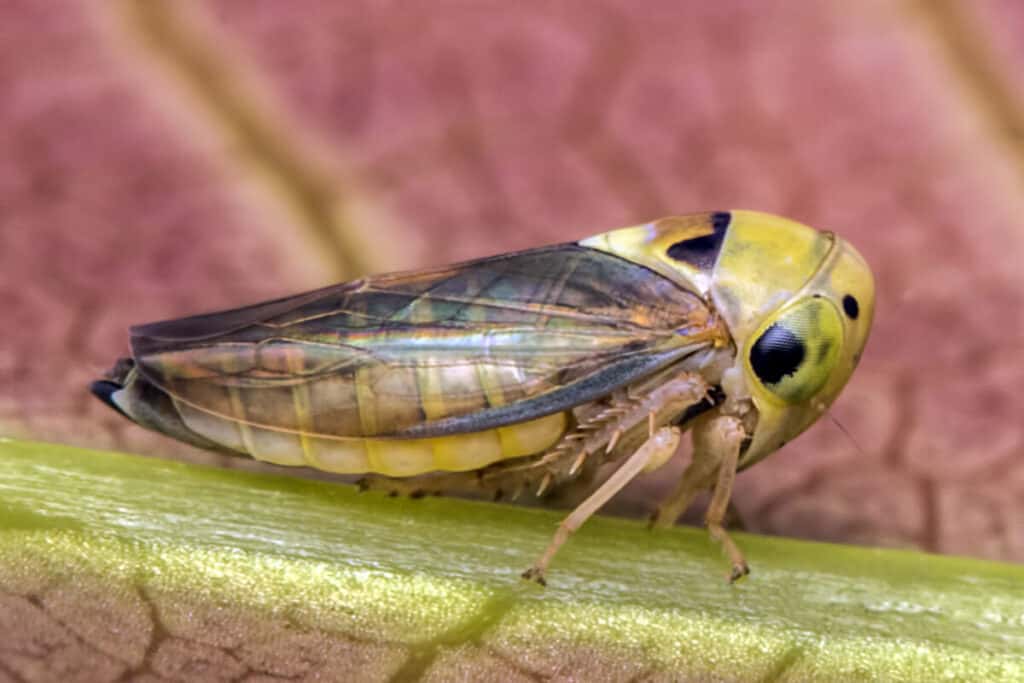Leafhoppers can be a real nuisance when they show up on vegetable plants in your garden.
They feed on the leaves, which causes them to become spotted and misshapen, reducing the quality of the produce. If left unchecked, these pests can cause serious damage to your crops.
In this blog post, we’ll look at what leafhoppers are, how to identify them, and some methods of prevention and control.
What are leafhoppers?
Leafhoppers are small, winged insects that feed on the leaves of plants. They range in size from 1 to 6 millimeters and have a distinctive flattened shape.
Leafhoppers pierce leaves and suck out the sap, causing spots or discoloration.
What damage do leafhoppers cause on plants?
Leafhoppers cause serious damage to plants by sucking the sap from their leaves. This causes the leaves to become spotted and misshapen, reducing the quality of the produce.
In extreme cases, leafhoppers can defoliate plants completely, leaving them vulnerable to other pests or diseases. Moreover, they can spread plant viruses which can cause further damage and reduce crop yield even more.
How to identify leafhoppers on plants

Leafhoppers can be identified by their small size (1-6 millimeters) and flattened shape. They often have variegated markings or stripes on their wings, which helps to distinguish them from other types of insects. You may notice a row of spots along the sides of their bodies.
The presence of leafhopper damage is also an sign that these pests are present. Common signs include discoloration or spotting on leaves, as well as misshapen leaves and stems.
Finally, if you see tiny jumping insects on your plants, it is likely they are leafhoppers. Inspect to confirm whether they have the characteristic shape and markings described above.
Read more:
How to get rid of leafhoppers
Prune away heavily infested leaves: Pruning away infested leaves can help reduce the population of leafhoppers and limit further damage to your crops.
Use a insecticidal soap or horticultural oil spray: Insecticidal soaps or horticultural oils are effective at killing adult leafhoppers on contact. Be sure to follow label instructions carefully when using these products.
Use neem oil: Neem oil is a natural insecticide derived from the neem tree. It works by disrupting the hormones of the leafhoppers, preventing them from reproducing and feeding.
Use diatomaceous earth: Diatomaceous earth is a natural product made from crushed diatoms that can be used to control leafhopper populations. It works by cutting through the insect’s outer shell, causing it to dehydrate and die.
Read more:
- How To Stop Insects Eating Plant Leaves
- How to Use Neem Oil and Save Your Plants
- How To Use Diatomaceous Earth In Potted Plants
- Insecticidal Soap vs Dish Soap for Pest Control
How to prevent leafhoppers on plants
- Keep weeds and debris around the garden cleared, as leafhoppers can hide in these areas.
- Install row covers over your vegetable plants to protect them from leafhoppers.
- Encourage beneficial insects such as ladybugs and lacewings as they feed on leafhoppers.
Host vegetable plants for leafhoppers
Leafhoppers attack a wide range of vegetable plants, including beans, cucumbers, peas, peppers, squash, and tomatoes.
Natural predators of leafhoppers
Leafhoppers have a number of natural predators, including birds, frogs, spiders, beetles, dragonflies, and certain species of wasps.
References
- https://ipm.ucanr.edu/PMG/GARDEN/VEGES/PESTS/leafhopper.html
- https://www.maine.gov/dacf/php/gotpests/bugs/leafhopper.htm
- https://mdc.mo.gov/discover-nature/field-guide/leafhoppers

Fact Checked, Written, and Published by Kevin Rodrigues
Kevin is the founder of Gardening Mentor, a website that aims to teach people to grow their own food in a limited space. As a self-taught gardener, Kevin has spent several years growing plants and creating gardening content on the website. He is certified in Home Horticulture and Organic Gardening from Oregon State University. He has a Post Graduate Diploma in Horticulture and Landscape Gardening from Mumbai University.
Read more
